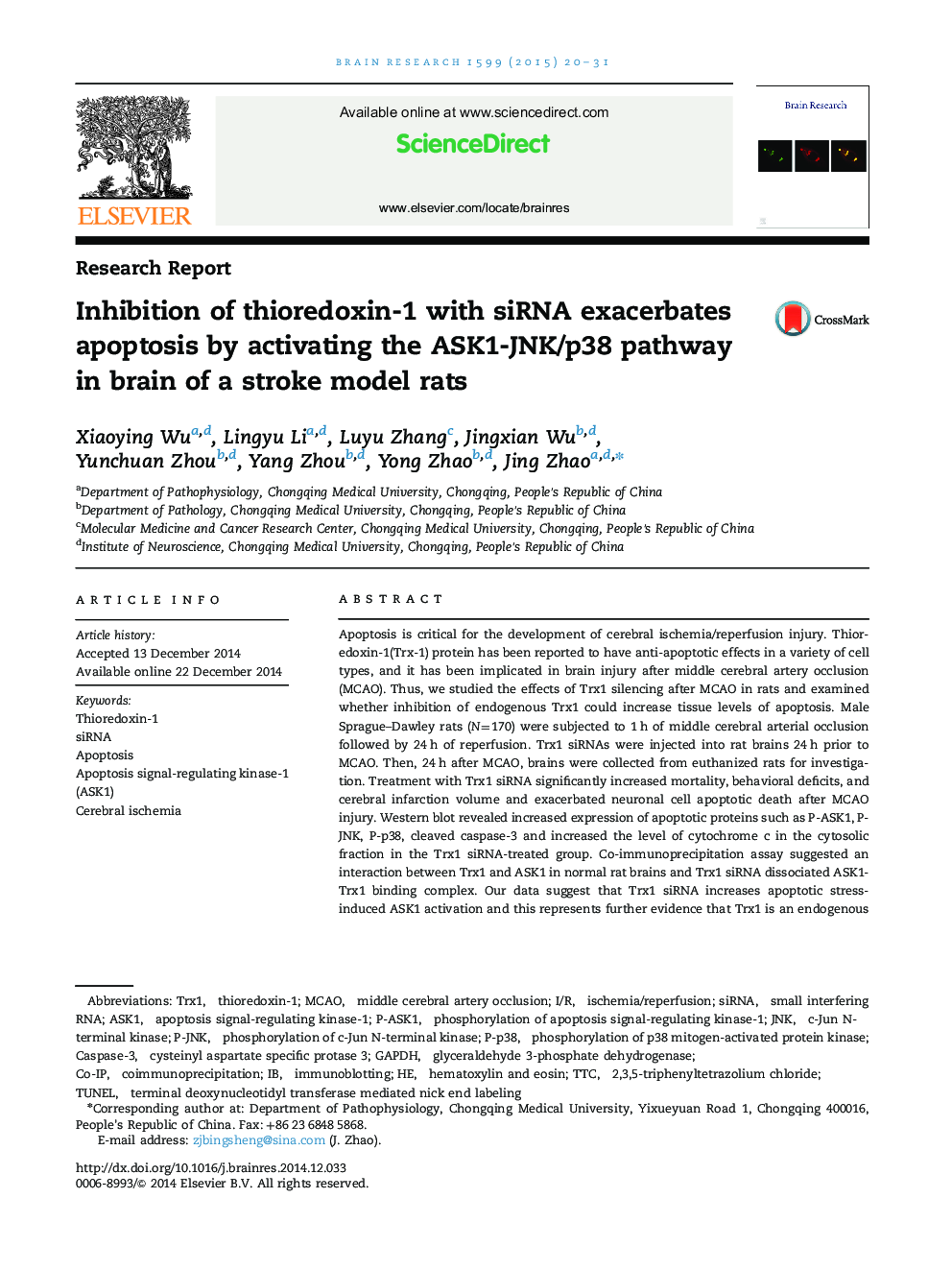| کد مقاله | کد نشریه | سال انتشار | مقاله انگلیسی | نسخه تمام متن |
|---|---|---|---|---|
| 4323928 | 1613840 | 2015 | 12 صفحه PDF | دانلود رایگان |

• Trx1 siRNA effectively inhibited Trx1 mRNA and protein expression.
• Trx1 siRNA significantly increased mortality, brain infarct size, and neurobehavioral deficits
• Trx1 siRNA obviously increased neuronal apoptosis death after MCAO injury.
• Inhibition of Trx1 may activate the ASK1-JNK/p38 pathway after MCAO injury.
Apoptosis is critical for the development of cerebral ischemia/reperfusion injury. Thioredoxin-1(Trx-1) protein has been reported to have anti-apoptotic effects in a variety of cell types, and it has been implicated in brain injury after middle cerebral artery occlusion (MCAO). Thus, we studied the effects of Trx1 silencing after MCAO in rats and examined whether inhibition of endogenous Trx1 could increase tissue levels of apoptosis. Male Sprague–Dawley rats (N=170) were subjected to 1 h of middle cerebral arterial occlusion followed by 24 h of reperfusion. Trx1 siRNAs were injected into rat brains 24 h prior to MCAO. Then, 24 h after MCAO, brains were collected from euthanized rats for investigation. Treatment with Trx1 siRNA significantly increased mortality, behavioral deficits, and cerebral infarction volume and exacerbated neuronal cell apoptotic death after MCAO injury. Western blot revealed increased expression of apoptotic proteins such as P-ASK1, P-JNK, P-p38, cleaved caspase-3 and increased the level of cytochrome c in the cytosolic fraction in the Trx1 siRNA-treated group. Co-immunoprecipitation assay suggested an interaction between Trx1 and ASK1 in normal rat brains and Trx1 siRNA dissociated ASK1-Trx1 binding complex. Our data suggest that Trx1 siRNA increases apoptotic stress-induced ASK1 activation and this represents further evidence that Trx1 is an endogenous anti-apoptotic molecule that diminishes focal cerebral ischemia/reperfusion injury. Its mechanism of action is likely related to attenuation of the ASK1-JNK/p38 signaling pathway.
Journal: Brain Research - Volume 1599, 2 March 2015, Pages 20–31